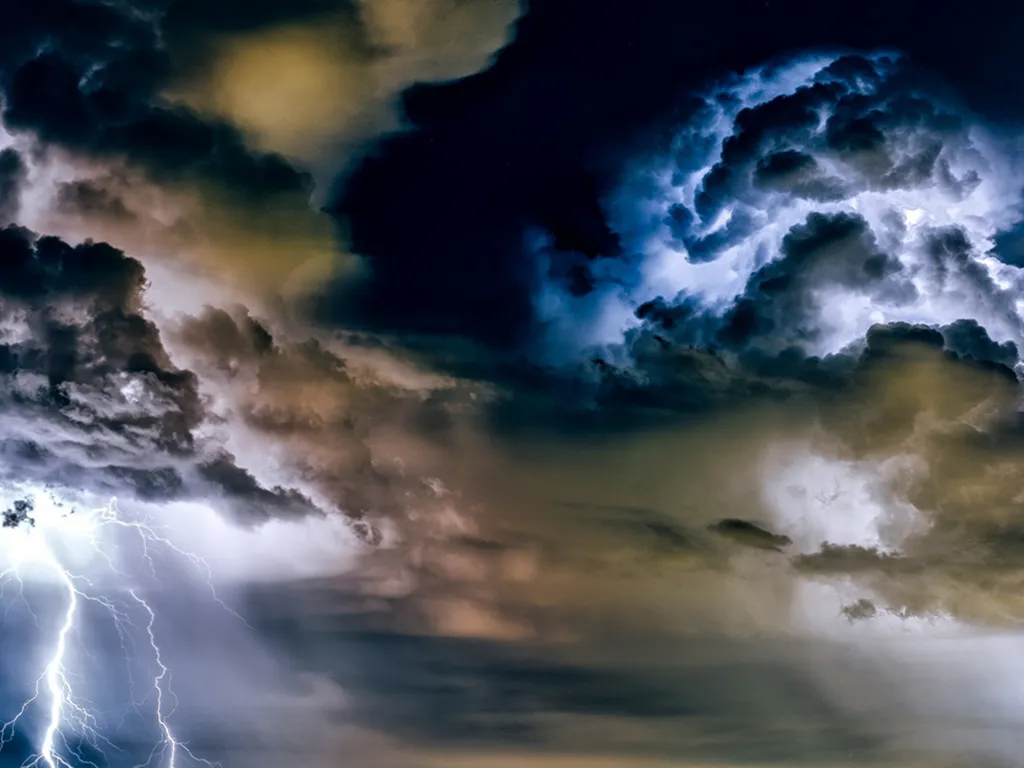Climatic Events that Changed the World
The 8.2k-Year BP Event: How Ancient Societies Adapted to a Sudden Climate Shift
Did a dramatic climate change in 6200 BC, known as the 8.2k-year BP event, alter human lives and societies? How did ancient peoples cope with such rapid environmental shifts? And are there lessons from their experiences that can inform our approach to modern climate change? This article explores the profound impact of this crucial period on communities across the Mediterranean basin, examining how different cultures responded to widespread environmental stress.
By Nick Nutter on 2024-01-17 | Last Updated 2025-05-24 | Climatic Events that Changed the World
This article has been visited 4,789 times

Understanding the 8.2k-Year BP Climate Event
The 8.2-kiloyear BP event was a sudden and significant global cooling episode that occurred approximately 6200 BC. This dramatic climatic disruption affected Earth's climate for two to three centuries, with longer-lasting consequences in some regions.
The Science Behind the Cooling Event
The primary cause of the 8.2k-year BP event is attributed to a massive influx of freshwater into the North Atlantic Ocean. This freshwater originated from the rapid draining of proglacial lakes, particularly Lake Agassiz, which formed as the vast Laurentide Ice Sheet retreated. This sudden surge of cold, fresh water disrupted the Atlantic Meridional Overturning Circulation (AMOC), a vital ocean current system that normally transports warm water northward. The resulting slowdown or collapse of the AMOC led to a significant cooling across the North Atlantic and, consequently, affected weather patterns globally, including the Mediterranean region.
Regional Climatic Impacts
The effects of the 8.2k-year BP event were varied, impacting different areas at different times and in different ways:
North Africa and Mesopotamia experienced a sudden period of increased aridity and cooling. In the Iberian Peninsula, summers became notably drier.
Along the northern coasts of the Mediterranean, some areas were barely affected, while others underwent dramatic environmental changes, becoming either cooler and drier or cooler and wetter.
Do you enjoy my articles? For your reading pleasure, this website does not carry third party ads. You could help me write more articles by buying me a cup of coffee.
Human Responses to the 8.2k-Year BP Event


This article aims not to definitively prove that a significant climatic event caused changes in human behaviour, but rather to highlight how societies and human behaviour changed, if at all, during or immediately after these climatic events. It's certainly possible to conclude that one did indeed lead to the other, and that humanity's trajectory after the 8.2k-year BP event might have been different without it. As is often the case with change, it presented both opportunities for some and challenges for others. We begin our examination of human actions in Mesopotamia, then move west, north, and south across the affected regions.
Western Asia: Adaptation and Innovation
In Western Asia, the drought associated with the 8.2k-year BP event lasted approximately three hundred years.
Migration to the Nile: A significant consequence was an influx of people from the Fertile Crescent into the fertile Nile Delta and Lower Egypt. This migration encouraged Egypt's delayed adoption of Neolithic practices, with new agricultural villages emerging throughout the Lower Nile.
Mesopotamian Innovations: Within Mesopotamia itself, the period saw the beginnings of systematic irrigation and the first evidence of surplus grain storage. These innovations were crucial adaptive responses to fluctuating water availability and the need for food security.
Tell Sabi Abyad (Northern Syria): Around 6200 BC, this Neolithic settlement underwent a notable cultural transformation. Archaeological findings reveal:
- New architectural styles, including extensive storehouses and small circular buildings (tholoi).
- The development of complex and decorated pottery.
- The introduction of new arrowhead types.
- An abundance of clay spindle whorls, indicating advancements in textile manufacturing.
The widespread use of seals and sealings, signifying the organization of controlled storage for surplus grain and the emergence of property indicators.
The Levant: Collapse, Dispersion, and Diversification
In the Levant, by the time the 8.2k-year BP event registered its full impact, established Neolithic lifestyles dominated the lowlands, while hunter-gatherers persisted in the highlands. A blurred boundary existed between these groups, with goods exchanged between them.
Mega-Site Decline: Between 7200 and 6700 BC, "mega-sites" in the Jordan Valley, such as Ain Ghazal and Basta, had grown to significant sizes, supporting thousands of inhabitants. These communities practiced mixed farming, including the production of milk and cheese. However, around 6700 BC, some five hundred years before the 8.2k-year BP event, these mega-site societies began to decline. The reasons for this earlier collapse are complex and debated, including factors such as:
- Soil erosion due to deforestation.
- Unsustainable social hierarchies and potential civil unrest.
- Overgrazing by livestock (goats and sheep).
- Weakening central power over ritual practices and imported luxury goods.
- An overly sybaritic lifestyle becoming unsustainable. The 8.2k-year BP event would likely have been the "final nail in the coffin" for these already stressed societies.
Jericho's Abandonment: The peculiar society at Jericho, known for its plastered and painted skulls of deceased relatives, disappeared around 6000 BC, and the site was abandoned for a millennium.
Adaptation and Survival: By the time of the 8.2k-year BP event, many mega-site populations had already dispersed into smaller settlements, occupying various ecological niches.
In drier landscapes, some communities adopted mobile herding, penetrating into the Sinai and Negev, displacing earlier hunter-gatherers by 6000 BC.
Coastal sites, like Atlit Yam and Askelon, emerged and exploited marine environments, engaging in deep diving for shellfish and deep-sea fishing from boats. Fortuitously, these adaptations, initiated prior to or early in the event, allowed these communities to survive the 8.2k-year BP event, albeit in a reduced form. The Levant, though shaken, was not completely shattered.
Cyprus: Mysterious Abandonment and Continued Presence
Cyprus presents a puzzling case. The island had been inhabited since the 10th millennium BC, boasting enough geographical diversity and a long coastline with fishing opportunities. Early Neolithic practices, including the introduction of pigs, wild boar, sheep, goats, and cattle, began around 8000 BC. However, these introduced species required repeated replenishment from the mainland, with cattle disappearing entirely during the early seventh millennium (too early for the 8.2k-year BP event to be the cause) and not reappearing for four millennia. Persian fallow deer, also introduced, became a key meat source.
Khirokitia and Dispersal: By the end of the seventh millennium BC, sites like Khirokitia characterized Cypriot society. These well-organized communities cultivated cereals, lentils, beans, peas, and plums, and raised sheep, goats, and pigs. They used stone vessels (as pottery had not yet developed) and supplemented their diet with wild plants. Despite their structured settlements, often protected by thick walls, these villages were abandoned between 6200 and 6000 BC, and their populations dispersed.
New Evidence: While it was long believed the island was abandoned for 1500 years, recent excavations at a necropolis near Limassol suggest that a much-reduced population continued to exist on Cyprus, indicating resilience rather than complete abandonment.
Anatolia: Shifting Agricultural Practices and Paused Expansion
In Anatolia (modern-day Turkey), the 8.2k-year BP event resulted in drier summers and a general cooling throughout the year.
Çatalhöyük's Adaptations: The significant Neolithic city of Çatalhöyük, continuously populated since around 7500 BC, had an economy based on sheep, cattle, wheat, barley, peas, almonds, pistachios, and fruits. Around 6200 BC, archaeologists studying fat deposits in ceramic pots found that the people of Çatalhöyük shifted from a primary reliance on cattle to a greater dependency on sheep and goats, animals better suited to drier conditions. Evidence of malnutrition in cattle bones from this period further supports this environmental stress.
Coastal Settlement: Interestingly, the coastal town of Mersin was founded around 6200 BC, coinciding with the climatic changes. This suggests that inland agriculturalists may have begun supplementing their diet with marine resources as inland conditions worsened.
Neolithic Advance Halted: The Neolithic "package" (farming and animal husbandry) spread out of the Fertile Crescent after 9500 BC, reaching southern Anatolia by 8200 BC. This expansion, often estimated at one kilometre per year by land and sea, likely occurred in bursts tied to population growth. However, around 6200 BC, this advance appeared to falter, halting for a couple of centuries at the gateway to the Balkans (around the Sea of Marmara and the Dardanelles).
Resistance or Climate? While some archaeologists propose resistance from hunter-gatherer tribes (who could more easily adapt to changing climates by moving), the 8.2k-year BP event likely played a significant role. The drier and cooler conditions in the Balkan area could have reduced crop yields, slowing population growth and thus the impetus for further expansion. This pause also allowed introduced plant species to acclimatize and adapt to the new climatic conditions.
Apennine Peninsula: Minor Impact on Farming Spread
In Italy, some scholars have hypothesized that the 8.2k-year BP cooling event might have hindered the spread of farming beyond the Aegean zone until wetter conditions returned.
Limited Evidence for Strong Link: While there was a rapid increase in population in Italy from around 6000 BC, a precise causal link between climate and the introduction of farming in the Italian peninsula requires further investigation. It is likely the result of a complex interplay of climatic, social, demographic, and economic factors. Furthermore, available paleoclimate records indicate that Italy experienced gradually wetter conditions from 6500 BC to 5000 BC, suggesting the 8.2k-year BP event may have had only a minor, localized impact.
Iberian Peninsula: Coastal Adaptations of Hunter-Gatherers
The Neolithic front line was still thousands of miles east of the Iberian Peninsula when the 8.2k-year BP event occurred. The region was sparsely populated by Mesolithic hunter-gatherers, particularly in favored areas like the Atlantic coast between Lisbon and Nazare, known for the famous Muge shell middens.
Coastal Ecosystem Changes: Around 6200 BC, coastal ecosystems in this area were altered due to decreased upwelling, rapid sea-level rise, and changes in coastal morphology, all linked to the 8.2k-year BP event.
The Muge Shell Middens: In response to these changes, Mesolithic tribes shifted to the Muge and Sado river estuary areas, establishing semi-permanent or permanent occupation sites. Radiocarbon data strongly suggests that the first shell middens, such as Cabeco da Arruda, and the arrival of saltwater, coincided with the 8.2k-year BP event.
Role of Shell Middens: These sites served multiple purposes for Mesolithic communities:
- Processing Centers: They provided convenient locations for processing shellfish, extracting meat using stone tools.
- Communal Hubs: Middens functioned as gathering places for socializing, tool making and maintenance, and rituals.
- Burial Grounds: Some Portuguese shell middens, particularly in the Muge region, were used as burial sites, highlighting their symbolic importance.
Decline with Neolithic Arrival: The use of shell middens gradually declined during the Early Neolithic period (5,000-3,500 BC), coinciding with the introduction of farming and animal domestication. These new food sources shifted settlement patterns away from coastal environments, leading to the near cessation of shell midden use by the Middle Neolithic (around 3500 BC).
North and East Africa: Sahara's Green Retreat
In North Africa, the archaeological record shows a sudden period of cooling and drying around 6200 BC, while in East Africa, the event presaged five centuries of drought.
Unique Subsistence Strategies: The hunter-gatherers of the Sahara region (Iberomaurusian groups from the north and black African groups from the southern Nile fringes) had very different subsistence strategies compared to the rest of the Mediterranean basin. They initially hunted abundant large game like aurochs, wild boar, buffalo, giraffe, and elephants across what was then a much greener Sahara, and fished in freshwater lakes such as Lake Mega Chad.
Early Innovations: These semi-sedentary groups invented pottery long before other Mediterranean peoples and conducted experiments in wild animal husbandry during the eighth to seventh millennia BC.
Capsian Adaptations: In Tunisia and eastern Algeria, the Capsian culture created massive middens of animal bones and land snail shells. They were fairly sedentary, hunting hartebeest, aurochs, and zebra, supplementing their diet with snails and wild onions. However, during the late seventh millennium BC, these people shifted to smaller game like gazelle and hares, and even the snails they consumed reduced in size – a likely consequence of the drier conditions brought on by the 8.2k-year BP event.
Key Takeaways: Adaptation and Resilience in the Face of Climate Change
It's impossible that any human on Earth in 6200 BC would have understood the causes of the 8.2k-year BP event. However, the sudden nature of the event, with effects discernible well within a single lifetime, would have been acutely apparent.
Human Responses to Climatic Stress
If the changes in human behavior observed around 6200 BC are more than mere coincidence, then we can conclude that the 8.2k-year BP event significantly impacted people's lives and ways of living:
Hunter-Gatherer Adaptations: For mobile hunter-gatherers, the primary response was often to relocate to more favourable environments and adapt their hunting and foraging techniques to changing resource availability.
Neolithic Community Innovations: For Neolithic agriculturalists, the response involved investing in methods for saving surplus food (e.g., storage facilities) and, perhaps, consciously or unconsciously, allowing or encouraging plant species to adapt to the new climatic conditions. In the longest-established Neolithic communities, we see the very first indications of systematic control over food surpluses, laying groundwork for future societal complexity.
Migration and Re-evaluation: There was also a clear tendency for some Neolithic communities to migrate to areas that remained more favourable for agriculture. In both cases (hunter-gatherers and farmers), communities were forced out of their established routines and compelled to innovate and adapt in order to survive. People were forced to re-evaluate their lives and how they lived, both as individuals and as communities.
Lessons for Today
Some innovations, such as improved weaving techniques, warehouses for surplus storage, and irrigation systems, were well within the technological capabilities of the day. More radical developments, like the widespread introduction of seals for property and inventory management, would take longer to become fully established.
The diverse and often ingenious ways in which ancient societies reacted to the 8.2k-year BP event offer valuable insights. They underscore human resilience and the capacity for adaptation in the face of profound environmental challenges. While the scale and nature of modern climate change differ, understanding how past societies navigated similar pressures can inform our strategies for building more resilient communities today.
References
Bicho, Nuno & Umbelino, Claudia & Detry, Cleia & Pereira, Telmo. (2010). The Emergence of Muge Mesolithic Shell Middens in Central Portugal and the 8200 cal yr BP Cold Event. Journal of Island & Coastal Archaeology. 5. 86-104. 10.1080/15564891003638184.
Broodbank, C. (2013) The Making of the Middle Sea. Thames and Hudson, London.
Cunha, M., & Cardoso, J. L. (2001). Mesolithic people from Portugal: an approach to the Sado ossuary series. Journal of Human Evolution, 41(1), 1-27.
Diniz, T. B., Ribeiro, A. P., Carvalho, A., & Bicho, N. (2014). Reconstructing mobility strategies and resource exploitation patterns at the Mesolithic shell midden of Cabeco da Amoreira (Portugal). Quaternary International, 337, 283-301.
Jackes, M. K., & Meiklejohn, C. (2008). Hunter-gatherer settlements in Portugal: a review of Mesolithic shell midden sites. In Hunter-gatherers of interior and coastal environments: archaeological studies in Portugal and western Iberia (pp. 31-57). Springer, Dordrecht.
Meiklejohn, C., Cunha, M., & Jackes, M. K. (2009). Mesolithic shell middens and human remains in Portugal: the state of the art. In Human remains in the archaeological record: interpreating the past from the present (pp. 273-292). Oxbow Books, Oxford.
Paco, A. C. (1938). Contribuitio para o estudo da Pre-Historia da Bacia do Tejo. Lisbon: Livraria Bertrand.
Parker, S.E., Harrison, S.P. The timing, duration and magnitude of the 8.2 ka event in global speleothem records. Sci Rep 12, 10542 (2022). https://doi.org/10.1038/s41598-022-14684-y
Roksandic, M. (2006). Shell middens: a bioarchaeological perspective. Springer, New York.
Santos, F., Soares, A., Bicho, N., & Cunha, M. (1990). Le site de Cabeco da Amoreira (Muge): tude de l'industrie osseuse. Revista de Arqueologia, 12, 145-166.
Neolithic Climate Change https://www.ancient-origins.net/news-history-archaeology/neolithic-climate-change-0010544
Do you enjoy my articles? For your reading pleasure, this website does not carry third party ads. You could help me write more articles by buying me a cup of coffee.
 1: Climatic Events
1: Climatic Events 3: Creating the Sahara
3: Creating the Sahara 4: The 4.2k yr BP event
4: The 4.2k yr BP event 5: The 3.2k yr BP Event
5: The 3.2k yr BP Event